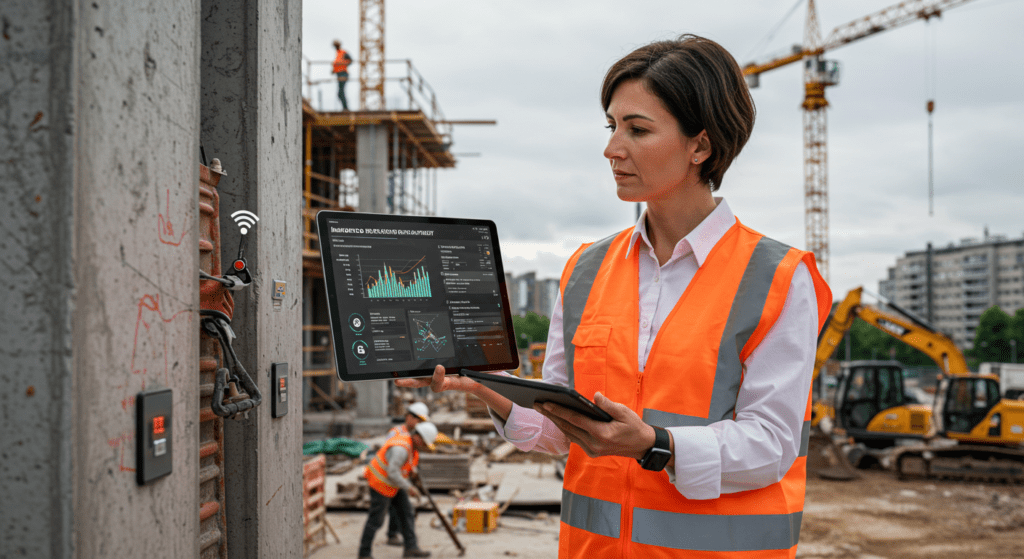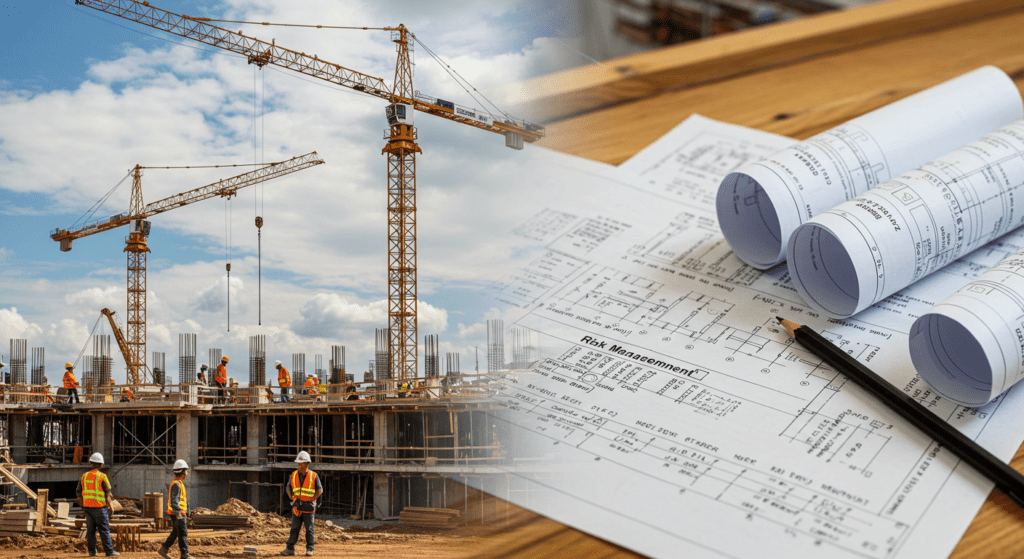- Understanding the Fundamentals of Construction Insurance
- Why Construction Insurance Is Critical for Your Project
- Types and Coverage Options in Construction Insurance
- How to Assess Your Insurance Needs for Construction
- Navigating the Claims Process in Construction Insurance
- Key Factors Impacting Construction Insurance Costs
- Common Misconceptions and FAQs Answered
- Risk Management Strategies for Construction Projects
- Future Trends and Innovations in Construction Insurance
Construction insurance is a specialized field designed to offer protection to contractors, builders, developers, and property owners involved in various construction projects. Many questions arise when considering this essential safeguard, such as what exactly is covered, how different policies interact, and why having the right plan in place can mean the difference between project success and unexpected financial burdens. This article addresses the most common questions while diving deep into various facets of construction insurance.

1. Understanding the Fundamentals of Construction Insurance
At its core, construction insurance serves as a safety net for the myriad risks encountered during construction projects. It is designed to protect against losses stemming from property damage, liability issues, and unforeseen accidents on job sites. Coverage plans are tailored for different construction phases—from groundbreaking to final completion. Aside from covering physical damage, the insurance also often includes legal liability components which protect against third-party claims that can arise from injuries or property damage associated with the project. The policies can cover both the building process and the completed structure, offering comprehensive protection against risks that may not be immediately apparent at the outset.
2. Why Construction Insurance Is Critical for Your Project
In construction projects, unpredictable challenges and hazards are a constant possibility. Without proper insurance, any incident—whether it’s an accident on site, a mistake in installation, or natural disasters impacting the project—can lead to severe financial setbacks and jeopardize the entire project timeline. Construction insurance is critical because it provides a buffer against these risks. It ensures that resources are available to repair damage, compensate affected parties, and address legal issues should they arise. This peace of mind allows project managers and stakeholders to focus on executing the project rather than constantly worrying about potential losses. In essence, it supports project continuity by mitigating risks that could otherwise halt construction and cause significant financial losses.

3. Types and Coverage Options in Construction Insurance
Multiple types of policies are available to cover various risks in construction, and selecting the right options is crucial for comprehensive protection. General liability insurance, for example, covers bodily injury and property damage occurring as a result of construction activities. Builders risk insurance specifically covers the buildings under construction, protecting against damage due to events like fire, vandalism, or theft of materials. Professional liability insurance, often known as errors and omissions insurance, safeguards architects, engineers, and contractors from claims arising from negligent work or design flaws. Additionally, workers’ compensation covers injuries sustained by employees on the job site, while umbrella policies provide additional layers of liability beyond the limits of primary policies. Each of these options can often be tailored to fit the size, scope, and specific needs of a construction project.
4. How to Assess Your Insurance Needs for Construction
Assessing insurance needs for any construction project requires a careful evaluation of the project’s scope, potential hazards, and the associated financial risks. Start by reviewing all aspects of the work planned—from the physical site to the expected duration of construction and the type of building materials used. Consider engaging with experienced brokers who specialize in construction insurance; they can help identify the appropriate mix of policies and determine adequate coverage limits. It is essential to consider local building codes, regulatory requirements, and even potential environmental liabilities. A thorough risk assessment helps ensure that no gaps exist in coverage and that the project is well-protected against both common and unusual risks. This systematic evaluation can save time, reduce unexpected costs later on, and ensure the overall success of the project.
5. Navigating the Claims Process in Construction Insurance
When an incident occurs, the claims process often becomes a stressful but critical part of the insurance experience. Contractors and project managers must understand that the claims process starts with immediate reporting of any incident to the insurer. Detailed documentation—such as photographs, witness statements, and incident reports—plays a vital role in ensuring that the claim is processed smoothly. Next, an adjuster evaluates the extent of the damage or liability, a process that can involve inspections and coordinated assessments with experts. It is crucial for the insured parties to cooperate fully throughout this process. Clear communication with the insurer, keeping records of all correspondence, and understanding the timeline for resolution can alleviate stress and expedite the process. The efficient handling of claims not only permits the project to resume quickly after an incident but also fosters a healthy relationship with the insurance provider for future needs.

6. Key Factors Impacting Construction Insurance Costs
Several factors influence the cost of construction insurance, and these can vary significantly from one project to another. One of the primary determinants is the project’s location; areas prone to natural disasters such as floods or earthquakes often incur higher premiums. The size and type of project also affect costs; larger and more complex projects naturally present higher risks. Safety measures implemented on the construction site play a pivotal role in adjusting premiums, as proven risk management protocols can reduce insurable incidents. Additionally, the experience and reputation of the contractor can influence insurance rates. Insurers often view well-established contractors with a track record of safety and reliability as less risky borrowers. Finally, the selected coverage levels and policy limits will directly affect premium costs. Balancing adequate protection with cost control is a critical aspect of procurement for construction insurance.
7. Common Misconceptions and FAQs Answered
A common misconception about construction insurance is that it covers all eventualities in a construction project. In reality, no single policy completely covers every possible risk. Another frequent misunderstanding is that only large projects require such insurance; smaller projects can also face risks that might lead to costly consequences without proper coverage. Additionally, many assume that after securing initial coverage, further assessment is unnecessary. In practice, the conditions of construction can change rapidly, and periodic reviews of the insurance coverages are advisable to ensure ongoing adequacy. Contractors also need to be aware that overlapping coverages may lead to disputes between different insurers during claims, making it essential to understand policy details and communicate clearly with all parties involved. Answering these common questions ensures stakeholders have a realistic perspective on the costs, benefits, and limitations of such insurance.

8. Risk Management Strategies for Construction Projects
Effective risk management is more than acquiring insurance; it involves a comprehensive strategy that anticipates potential hazards and sets up preventive measures. Construction site safety training is vital in minimizing injury-related claims even before insurance is considered. Implementing strict quality control measures reduces the chance of costly errors or defects in the completed structure. Regular site inspections, adherence to building codes, and embracing technological solutions for monitoring and documentation further enhance safety. A well-structured plan includes contingency funds and rapid response strategies designed to manage any disruptions effectively. By integrating insurance with proactive risk management practices, stakeholders can reduce premium costs over time while maintaining a secure and efficient construction process.
9. Future Trends and Innovations in Construction Insurance
With advancements in technology and a growing emphasis on sustainability, the field of construction insurance is set to evolve rapidly. One emerging trend is the use of smart sensors and IoT devices on construction sites, which provide real-time data that can lead to lower premiums by demonstrating proactive risk management. Likewise, the rise of Building Information Modeling (BIM) is revolutionizing the way risks are assessed and managed during construction phases. Insurers are increasingly adopting digital platforms for claims management, leading to faster processing and more transparent communication channels. Furthermore, sustainable building practices are prompting insurance companies to develop specialized products that incentivize green construction. This combination of high-tech solutions and innovative policy design promises not only to reduce the likelihood of claims but also to foster a broader culture of safety, efficiency, and environmental responsibility in the construction industry.

Conclusion
In conclusion, understanding and implementing construction insurance is a multifaceted process that ensures protection in a field filled with uncertainties. The right insurance policy, combined with robust risk management strategies, enables construction projects to proceed with confidence despite inherent hazards. Through careful assessment, transparency in the claims process, and a vested interest in future technological innovations, construction professionals can safeguard their investments against unforeseen disasters while promoting industry best practices.
The structure of construction insurance touches on every aspect of project life, from risk assessment and cost management to effective documentation and future planning. By dispelling common misconceptions and addressing frequently asked questions, stakeholders can move forward with a clear understanding of what is required to ensure both compliance and peace of mind. Moreover, the growing trend towards digital integration in insurance processes signifies that the field is continuously adapting to meet the unique challenges of contemporary construction projects.
As projects continue to evolve in complexity, the demand for tailored insurance solutions rises in parallel. Contractors, developers, and related professionals should embrace these insights to align their strategies with market innovations. The convergence of technology and deep industry expertise not only promises enhanced security but also the potential for cost-effective insurance practices that adapt to changing risks in real time. Whether you are at the initial planning stages or managing multiple ongoing projects, staying informed about these developments is crucial to maintaining a competitive edge and ensuring long-term project success.
